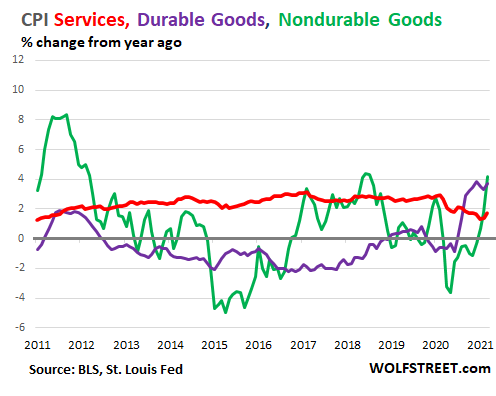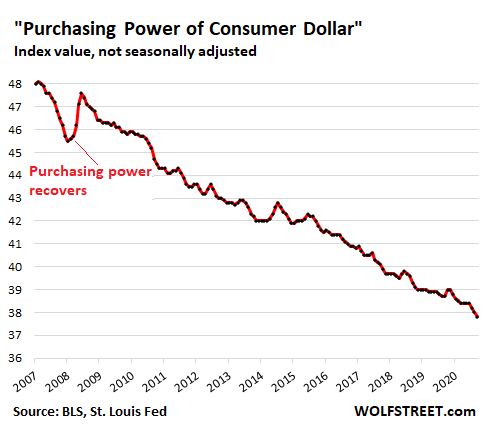Dollar’s Purchasing Power Drops Sharply to Record Low, But It’s a Lot Worse than CPI Shows
If the homeownership component in CPI mirrors the Case-Shiller Home Price Index, CPI would jump 5.1%! Not to speak of new & used vehicle prices, which I nevertheless speak of.
The Consumer Price Index jumped 0.6% in March compared to February, the sharpest month-to-month jump since 2009, according to the Bureau of Labor Statistics today, and was up 2.6% from a year earlier, after the 1.7% rise in February.
The infamous Base Effect, which I discussed last week in anticipation of what is now coming, was responsible for part of it: CPI had dipped in March last year, which created a lower base for today’s year-over-year comparison. Over the 13 months since February last year, which eliminates the Base Effect, CPI rose 2.3%.
- Prices of durable goods continued their upward surge, rising 3.7% from a year ago (purple line);
- Prices of nondurable goods, which are largely food and energy, including gasoline, jumped 4.2% (green line);
- Prices of services rose 1.8%. This is the biggie, accounting for two-thirds of overall CPI. It is dominated by a measure for homeownership costs, which ludicrously, as home prices are exploding, merely ticked up 2.0% from a year ago. More on that in a moment.

Consumer price inflation means loss of purchasing power of the consumer dollar, and thereby the loss of the purchasing power of labor denominated in dollars. And the purchasing power thus measured dropped 0.5% in March from February to a new record low, according to the BLS data. Given the insistence by the Fed on perma-inflation, the dollar’s purchasing power keeps dropping from record low to record low:

But wait, it’s a lot worse…
…click on the above link to read the rest of the article…